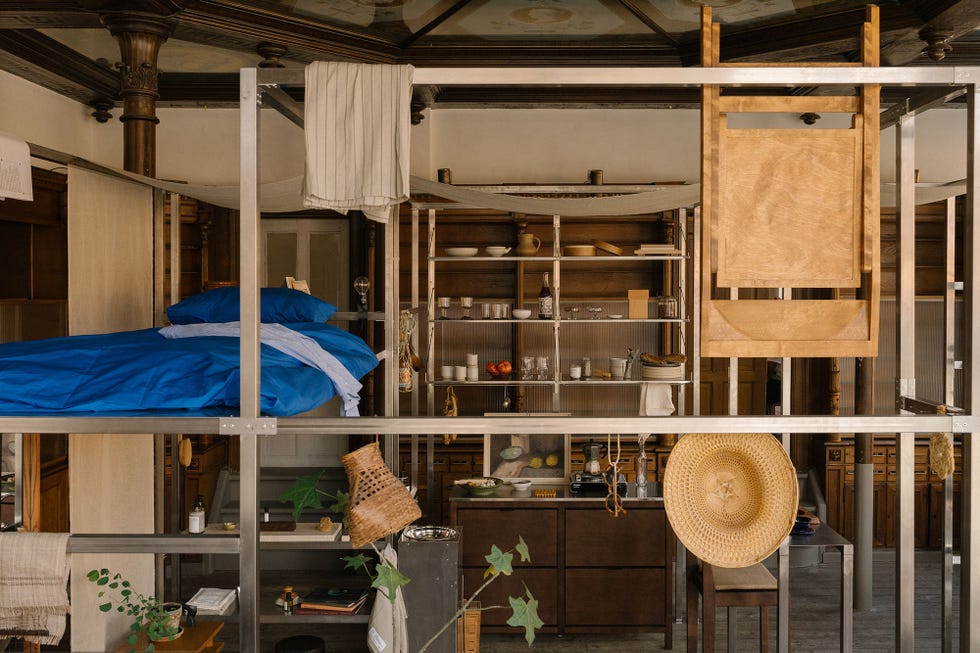We tend to think «great» is synonymous with «big,» or «grand» or «palatial.» (Maybe this could be called «greater than» syndrome and is simply a fallacy of arithmetic.) But what if instead of aspiring to greatness we instead pursued something humbler? That was the thesis of Danish design brand FRAMA’s 3DaysofDesign exhibition, Structures of Living, which explored modular living in theory (founder Niels Strøyer Christophersen referenced Heidegger in the press materials) and, more impactfully, in practice, by erecting an aluminum housing structure inside of the former apothecary the brand uses as a storefront.
«Small frameworks force you to be clever with interior choices and to really contemplate the utility and character of each furnishing,» says Rhya Johnston-Wallace, Head of Marketing for FRAMA. It helps, indeed, that FRAMA’s furniture is beautiful and well-made, but seeing it contextualized within this structure-within-a-structure made me rethink everything I thought I wanted for myself. Never before has a hot plate resonated so deeply with me.
Drawing on the work and ideas of Charlotte Perriand, Bruno Munari, Buckminster Fuller, Andrea Zittel, and others, the modular dwelling had dedicated areas for sleeping, relaxing, entertaining, dining, and working. It was outfitted with multifunctional pieces, all according to a set of internal guidelines around which the brand has developed their furniture and tableware collections: storage should be vertical, lighting should be soft, wood tones should be balanced with metals (and metal furniture should double as outdoor furniture in a pinch.)
There was an element of impermanence to the set up, like being perpetually on safari. One would have to get used to a lofted bed. But when our cities offer so few solutions to housing shortages (anyone want to move into their old office?), the installation made me wonder what opportunities there could be if I reconsidered what architecture could mean, and do, and be for. Maybe, it turns out, an old office is actually all I need. And maybe my aversion to doing the dishes is valid, and I don’t need the temptation of a deeper sink.
While it helps that the installation was staged in a well-preserved historical building in Copenhagen, the ideas behind it could translate easily to a Williamsburg loft, or the former school building many of my friends live in on the Lower East Side. Structures of Living was successful not only because it referenced the right talents, but because it proved that the future they designed for is still within reach today. How’s that for aspirational?

Sean Santiago is ELLE Decor’s Deputy Editor, covering news, trends and talents in interior design, hospitality and travel, culture, and luxury shopping. Since starting his career at an interior design firm in 2011, he has gone on to cover the industry for Vogue, Architectural Digest, Sight Unseen, PIN-UP and Domino. He is the author of The Lonny Home (Weldon Owens, 2018), has produced scripted social content for brands including West Elm and Streeteasy, and is sometimes recognized on the street for his Instagram Reels series, #DanceToDecor







